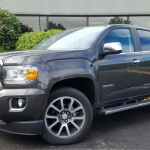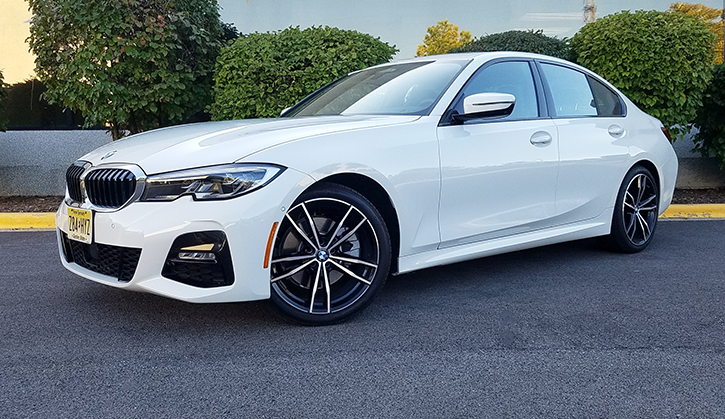
 2019 BMW 330i xDrive Sedan
2019 BMW 330i xDrive Sedan
Class: Premium Compact Car
Miles driven: 308
Fuel used: 11.7 gallons
| CG Report Card | |
|---|---|
| Room and Comfort | B |
| Power and Performance | B |
| Fit and Finish | A |
| Fuel Economy | B |
| Value | B- |
| Report-card grades are derived from a consensus of test-driver evaluations. All grades are versus other vehicles in the same class. Value grade is for specific trim level evaluated, and may not reflect Consumer Guide's impressions of the entire model lineup. | |
| Big & Tall Comfort | |
| Big Guy | B- |
| Tall Guy | B- |
| Big & Tall comfort ratings are for front seats only. "Big" rating based on male tester weighing approximately 350 pounds, "Tall" rating based on 6'6"-tall male tester. | |
| Drivetrain | |
| Engine Specs | 255-hp 2.0L |
| Engine Type | Turbo 4-cylinder |
| Transmission | 8-speed automatic |
| Drive Wheels | AWD |
Real-world fuel economy: 26.5 mpg
Driving mix: 55% city, 45% highway
EPA-estimated fuel economy: 25/34/28 (city, highway, combined)
Fuel type: Premium gas recommended
Base price: $42,250 (not including $995 destination charge)
Options on test vehicle: Black Vernasca Leather ($1450), Drivers Assistance Pro Package ($1700), M Sport Package ($5000), Premium Package ($2800), Executive Package ($2100), garage-door opener delete (-$200), Sensa Tec dashboard delete (-$350), remote engine start ($300), wireless device charging ($500), Harmon Kardon surround sound audio system ($875)
Price as tested: $57,420
More 3-Series price and availability information
Quick Hits
The great: Satisfying power and respectable fuel economy from 4-cylinder engine; nimble handling; nicely finished interior
The good: Available technology features; spacious trunk
The not so good: Stiff ride; disappointing level of standard equipment, and option packages are pricey
John Biel
BMW has cleared the decks for the seventh iteration of the 3-Series premium compact. The new-for-2019 car comes pared down to a single engine and one transmission—though it continues to offer a choice of rear- or all-wheel drivelines.
There is a new platform for this 3-Series. It shows up in car that is 2.9 inches longer and 0.6 inches wider than the previous one. Even the enlarged grille “kidneys” let on that something is up. There’s no denying the 3 looks and feels bigger than its forebears, but it still behaves like a top-notch sport sedan.
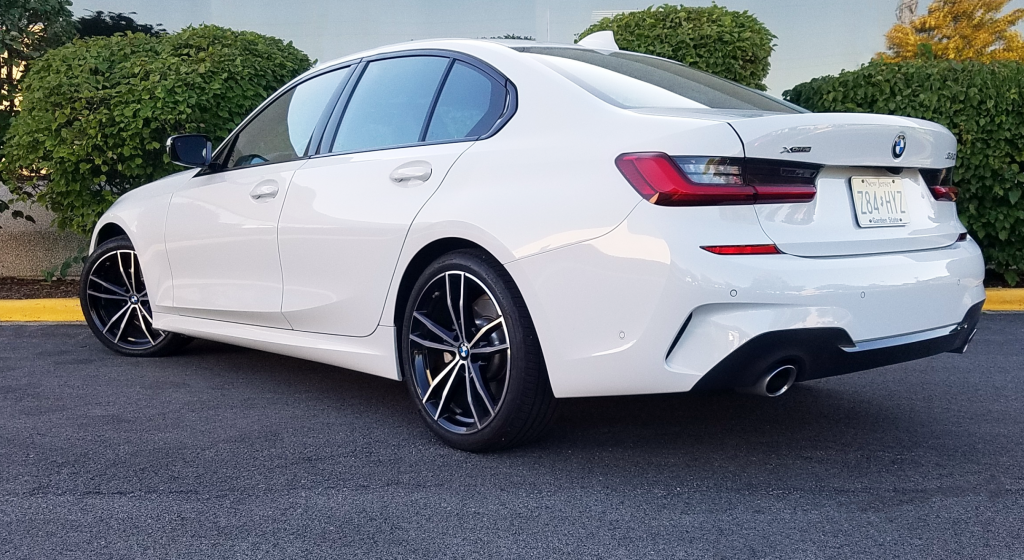
It bears noting that it is the 3 sedan that is newly redone. A previous-generation AWD wagon with a carryover engine remains for 2019. Plus, it’s a given that the gen-7 330i sedans soon will have some differently-powered company. However, as it’s done before with new-model releases, BMW starts with a cornerstone car and then builds off that.
Consumer Guide got a crack at a 330i with xDrive all-wheel drive, a car that starts at $43,245 with delivery, which is $2000 more than the rear-driver. With a quartet of option packages and some stand-alone extra-cost items, final cost shot up to $57,420—and would have been $550 higher still if not for a pair of elective standard-equipment deletions. Frankly, some of those expenditures brought along things you might otherwise take for granted in a luxury-brand car like leather upholstery, heated front seats, remote engine start, wireless charging, satellite radio, and Apple CarPlay compatibility.
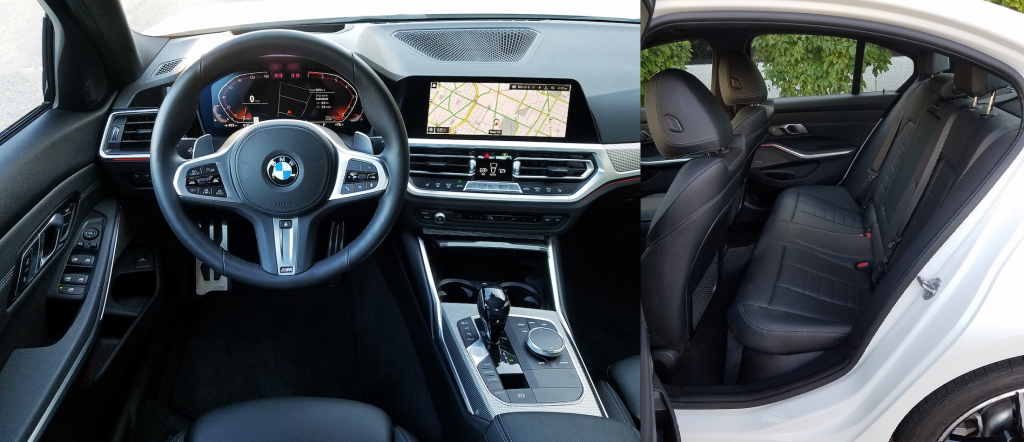
Ultimately, the determination of what the 3-Series is worth to a prospective buyer will be calculated after a turn behind the wheel. Judging by the test car, the new 3 exhibits responsive, direct, and properly weighted steering—all the more when set in “Sport” mode with higher resistance. It is nimble in lane changes, body roll is under good control, and braking is excellent. When this driver forced the issue on a rain-dampened exit ramp, he could feel the xDrive beavering away, its programming keeping the car on the pavement and pointing the right way. It gives you a little more wiggle room if you’re more aggressive than you could be, and a little more cover if you’re dumber than you should be. As for ride from the standard 19-inch alloy wheels and M sport suspension, he did field some rear-seat-passenger complaints about bump absorption, even in “Comfort” mode.
Test Drive: 2019 Volvo S60 T8 Polestar
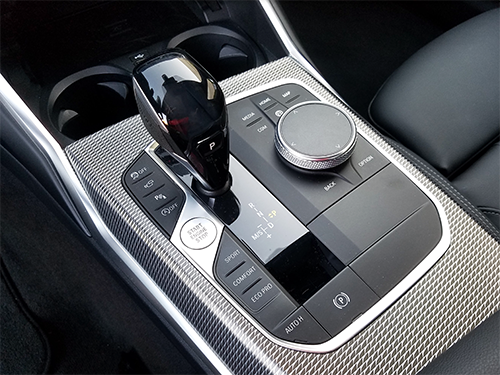
Like the previous engine (which remains in the wagon) the 2019 BMW 330i mill is a turbocharged 2.0-liter 4-cylinder, but in its makeover it develops 255 horsepower (a gain of seven) at a slightly lower engine speed, and a considerably heightened 294 lb-ft of torque that hits its stride at just 100 more rpm than the former torque peak. It will be heretical to some, but the days of three-pedal driving seem to be over for the 3-Series. A fine 8-speed automatic is the sole transmission.
The engine is fast-acting with virtually lag-free standing-start getaway, and the trans kicks down promptly for easy highway merging and passing. “Sport” mode enables crisper pedal response, holds gears longer, and heightens exhaust note. Per BMW, the xDrive job is the faster of the two models to 60 mph at 5.3 seconds, an advantage of 0.3 seconds. The EPA projects that a 330i xDrive should average 25 mpg in city driving, 34 mpg on the highway, and 28 combined. This driver hewed pretty close to those estimates, logging 27.7 mpg from a 221-mile trip with 55 percent city-type operation.
There’s a more spacious feeling inside the new 3, particularly from side to side. Headroom is good in both rows, and the same can be said for legroom. Comfortable seats offer sound support. Detailing in the test car showed some flair, with contrast stitching in the seats and door panels, optional ambient lighting strips integrated into slashes of bright metal on the dash and doors, and lots of soft-touch areas on all door panels and armrests. (One of the credit options did remove the leatherette dashboard covering.)
Drivers grip a leather-wrapped steering wheel and view virtual driving controls, including BMW’s currently favored design with pentagonal gauges at either end of the instrument cluster. Audio, navigation, and other infotainment capabilities fall under BMW’s iDrive system. It’s not as difficult to set and access audio presets as it used to be, and information shows up well on the 8.8-inch screen. However, switching between functions still requires lots of work with buttons and the dial controller on the console. Climate controls are subject to quite a few repetitive-push buttons, and major ones—like those for temperature and fan speed—are concentrated in the center on silver buttons with icons that are hard to make out at a glance.
Test Drive: 2019 Genesis G70 3.3T
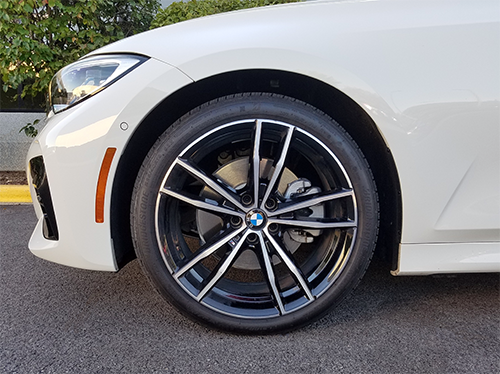
Cabin storage is just OK, with middling glove box and console-cubby capacity. Small pockets in each door include bottle holders. A bin pulls out of the dash to the left of the steering column, and net pouches are on the backs of the front seats. Covered cup holders occupy the forward part of the console (with the optional wireless charger and device inputs) and the pull-down rear armrest.
Trunk space is useful but not exceptional. Covered gooseneck hinges intrude on load space somewhat, but the lid raises fully vertical to facilitate loading. Net-front cubbies in the rear corners can hold small items. Rear 40/20/40 seats retract via levers in trunk. They fold almost flat and match up well with the trunk floor save for a narrow gap at the juncture.
Standard niceties and necessities include things like a moonroof, LED headlights and fog lights, a Wi-Fi hotspot, 14-way power front seats with memory, active blind-spot detection, and forward collision warning and mitigation.
More safety-monitoring and driving aids are available, including “Extended Traffic Jam Assistant” that steers and brakes the car on certain highways at speeds up to 37 mph if the driver’s attention is on the road.
The new BMW 3-Series sedan is bigger, but it’s better and it’s back from the recent doldrums that had competitors catching up, and fans wondering if the prototypical sport sedan had lost its mojo.
Test Drive: 2019 Volkswagen Arteon R-Line
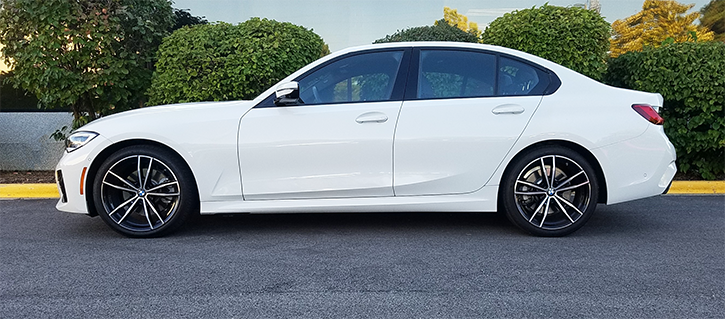
Test Drive: 2019 Mercedes-Benz AMG CLS53
2019 BMW 330i


